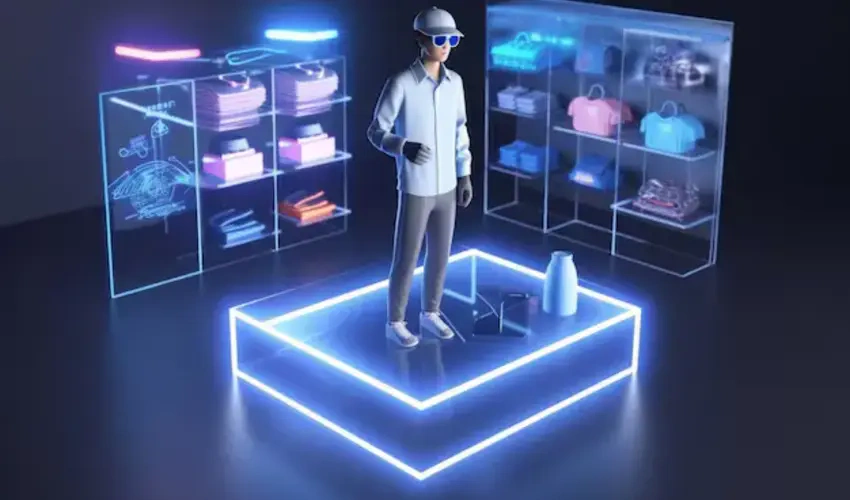Shopping has always evolved with technology. From local markets to online stores, each step brought more convenience. Now, we are entering a new phase: the Virtual Reality Store. This innovation blends digital experiences with the feel of physical shopping. Customers can walk through virtual aisles, explore products, and make purchases—all from home.
But what exactly is a virtual reality store? How does it work? And why is it changing the shopping world? Let’s explore this exciting trend.
What Is a Virtual Reality Store?
A virtual reality store is a digital shopping space. It uses VR technology to create immersive, 3D environments. Shoppers wear VR headsets to enter these stores. Inside, they can browse products as if in a real shop.
Unlike traditional online stores, VR stores offer interaction. Customers can pick up items, view them from different angles, and even test some products virtually. This makes online shopping more engaging and lifelike.
How Do Virtual Reality Stores Work?
Virtual reality stores use several technologies to create realistic experiences:
- VR Headsets: Devices like Oculus Quest or HTC Vive let users enter virtual stores.
- 3D Product Models: Products are designed as 3D models. Customers can view them from every angle.
- Motion Tracking: Sensors track users’ movements. When a user turns or moves, the virtual store responds.
- Interactive Features: Customers can touch, move, and explore items using VR controllers.
- Online Payment Integration: Payment systems allow easy checkout within the virtual store.
Together, these tools create a seamless and interactive shopping experience.
Benefits of Virtual Reality Stores
Virtual reality stores offer many benefits for both customers and businesses. Here are some key advantages:
1. Immersive Shopping Experience
VR stores make online shopping more interactive. Customers feel like they are inside a real shop. They can explore products naturally instead of scrolling through pictures.
2. Convenience and Comfort
With a virtual reality store, shopping becomes more convenient. Customers can visit stores from home. There is no need to travel, find parking, or stand in long lines.
3. Better Product Understanding
3D product models give customers a better understanding of items. For example, furniture can be viewed from all sides. Some stores even let users place items in virtual rooms to check the fit.
4. Personalized Experiences
VR stores use AI to personalize shopping. The system can recommend products based on customer preferences. This makes the experience more engaging and relevant.
5. Global Reach
Virtual stores break location barriers. A shopper in Asia can visit a store in Europe without leaving home. This opens new markets for businesses.
Applications of Virtual Reality Stores
VR stores are becoming popular in various industries. Let’s look at some sectors using this technology:
1. Retail and Fashion
Clothing brands use VR stores to showcase their collections. Customers can view outfits on virtual mannequins or even themselves. For example, Gucci and Tommy Hilfiger have launched VR showrooms.
2. Furniture and Home Décor
Furniture shopping can be tricky online. Virtual reality stores solve this problem. Brands like IKEA let users place virtual furniture in their homes. This helps customers choose items with confidence.
3. Electronics and Gadgets
Tech stores use VR to demonstrate products. Customers can explore smartphones, laptops, and appliances in detail. Some stores even simulate device functions in VR.
4. Automotive Industry
Car companies offer virtual showrooms where customers can inspect vehicles. Users can check interiors, colors, and features. Some brands, like Audi, even provide virtual test drives.
5. Real Estate
Real estate agencies use VR stores to showcase properties. Buyers can walk through virtual homes without physical visits. This saves time and widens the buyer’s reach.
Challenges of Virtual Reality Stores
Despite the benefits, virtual reality stores face challenges. Here are some key obstacles:
1. High Initial Costs
Creating VR stores requires advanced technology. Building 3D models and VR environments can be expensive.
2. Need for VR Equipment
Users need VR headsets to access these stores. While headset prices are dropping, not everyone owns one yet.
3. Technical Limitations
VR stores need fast internet and powerful systems. Lag or glitches can disrupt the shopping experience.
4. Learning Curve
Some customers find VR technology unfamiliar. Stores need to provide simple guides and user-friendly interfaces.
Businesses are working to solve these issues. As VR technology improves, these challenges will decrease.
The Future of Virtual Reality Stores
The future of virtual reality stores looks promising. Here are some trends to watch:
- More Accessible Devices: VR headsets are becoming cheaper and easier to use. This will increase customer adoption.
- Improved Graphics and Interaction: Better hardware will create more realistic and responsive virtual stores.
- AR Integration: Augmented reality (AR) will blend virtual stores with real-world environments.
- AI-Powered Personalization: AI will make shopping more personalized. Virtual assistants might help customers find the best products.
- Virtual Shopping Malls: In the future, entire shopping malls might go virtual. Customers could visit multiple stores in one virtual location.
Impact of Virtual Reality Stores on Traditional Retail
Virtual reality stores are influencing traditional retail. Physical stores are adopting VR elements to enhance in-store experiences. For example, some shops offer VR fitting rooms. Customers can try outfits without changing clothes.
Retailers are also using VR for marketing. Virtual events and product launches attract tech-savvy customers. As VR grows, the line between physical and virtual shopping will blur.
Tips for Businesses Adopting Virtual Reality Stores
Businesses considering VR stores should follow these steps:
- Start Small: Begin with a virtual showroom or a limited product range.
- Focus on User Experience: Make the VR store easy to use and navigate.
- Ensure Technical Quality: Invest in good software and hardware to avoid glitches.
- Promote the VR Store: Educate customers about the VR store through social media and marketing.
- Collect Feedback: Listen to customer feedback to improve the experience.
Conclusion
The virtual reality store is more than a tech trend. It represents the future of shopping. By offering immersive, convenient, and interactive experiences, VR stores attract modern consumers.
As technology advances, these stores will become more accessible and popular. From fashion to furniture, many industries are already benefiting from this innovation. In the coming years, shopping in virtual stores might become as common as browsing websites today.
For customers, VR stores mean more fun and confidence in their purchases. For businesses, they open new markets and create memorable shopping experiences. Virtual reality stores are indeed ushering in a new era of interactive shopping.
Read Dive is a leading technology blog focusing on different domains like Blockchain, AI, Chatbot, Fintech, Health Tech, Software Development and Testing. For guest blogging, please feel free to contact at readdive@gmail.com.





